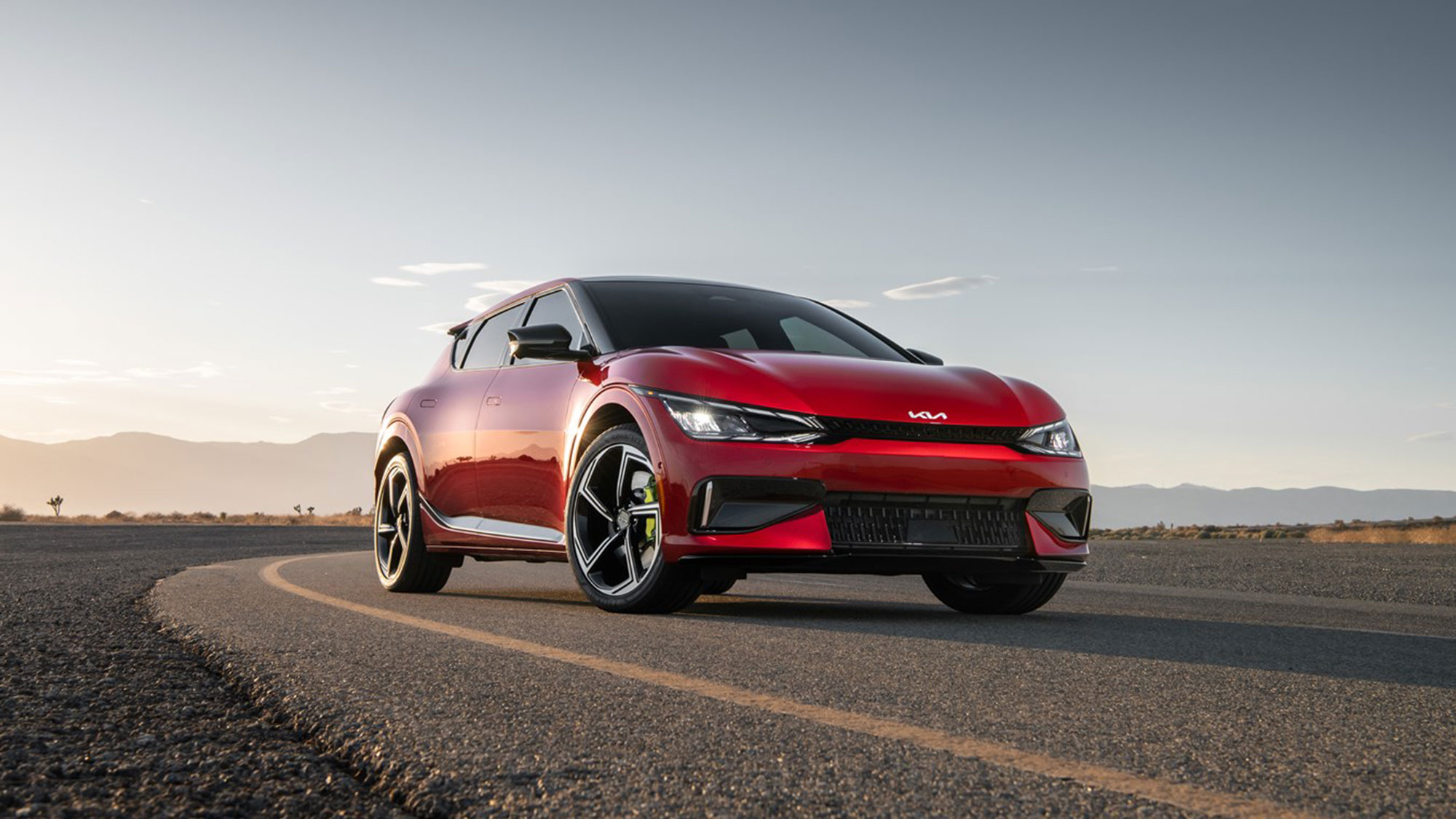

Boasting 576 horsepower and 545 pound-feet of torque, the new Kia EV6 GT is thrilling. Press your finger on the GT button on the steering wheel and, like electrified magic, the crossover seems to catapult into hyperspace. The company boldly proclaims that the EV6 GT can go toe to toe with the Ferrari Roma or the Lamborghini Huracán Evo Spyder RWD, accelerating from 0-60 miles per hour in 3.4 seconds. Take a moment and let that comparison sink in.
In fact, this vehicle was recently recognized with the 2023 World Performance Car title at this year’s World Car Awards. After having the EV6 GT in my possession for a test drive, I can report that it has certainly earned its accolades.
Planning to build a crossover with supercar-like chops is no accident or stroke of luck—this is how Kia’s EV strategy has developed behind the scenes.
Planning for a winner
Stunners like the EV6 GT have been on the books for years now, a glimmer in Kia’s eye long before it was a reality.
The EV-dedicated chassis on which the EV6 was engineered was announced back in 2017, which means the design was in the works well before that. The Korean company’s long-term strategy is paying off: Late last year, the Environmental Protection Agency (EPA) reported that Kia achieved the largest reduction in CO2 emissions in the U.S. market for its 2016 to 2021 vehicles. After the Biden Administration’s newest edict to drastically reduce emissions from vehicles was revealed last week, Kia and its parent company Hyundai Motor Group appear to be way ahead of the curve.
Twenty-five years ago, Kia was better known for making inexpensive cars that were more like uninteresting appliances than the attractive vehicles earning accolades now. Its rise to popularity is no accident, as the company has steadily poured money into research and development in its domestic market in Korea, which spills over into the rest of the world. For example, Hyundai Motor, Kia, and Hyundai MOBIS (Hyundai’s global parts company) are banding together to invest $18 billion into EVs. The goal: to catapult Hyundai Motor Group into the global top three global automakers by 2030 with a planned total lineup of 31 EV models.
Every year, the EPA issues a trend report on the industry’s fuel economy and emissions, and in its most recent report it called out Kia’s performance as exceptional. The automaker recognized that its fuel economy and emissions had been improving year over year, but it wasn’t anticipating doing as well as it did in the report.
“To be frank, it was a little bit of a surprise,” says Steve Kosowski, the company’s manager of long-range strategy and planning. “We knew we were doing well, but seeing it in the EPA report was a nice pat on the back for the company.”
At the intersection of EV product and portfolio planning, regulatory compliance, and charging infrastructure, Kosowski has a job that involves peering ten years into Kia’s future. Soothsayers like Kosowski tackle the tricky prospect of figuring out where the company should spend its time and money, straddling the line between practical planning (production vehicles) and wishful thinking (concept cars and futuristic prognostication).
With future-predicting analysts like Kosowski on board, the automaker doesn’t have just an inkling about which cars are going to be a success; they have enough data to support their predictions.
None of this means that Kia is happy to sit back and bask in its achievements. At its 2023 CEO Investor Day on April 5, 2022, Kia ramped up its electrification target even more, announcing it was aiming for 1.6 million EV sales by 2030.
Getting (way) beyond boring crossovers
Any and all success the company is seeing now is due to its meticulous planning and analysis at a micro and macro level, and the product planners read the tea leaves to see what trends are unfurling. Generally, Kosowski says, product planners start at a high level, looking at industry volumes and analyzing trends to get a forecast that is as targeted as possible.
“The first big step is to understand the regulatory requirements,” Kosowski says. “That gives you a really good calculus on how many EVs you need to sell, how many trucks you can sell, and so on. I like to look at it like a wheel: you have the consumer research spoke, the supplier spoke, the dealer spoke, and you start to get a flavor for what people like and want and what they’re willing to pay for.”
Kia seems to be cranking out hit after hit, riding on the wave of success from its Telluride SUV, which also raked in awards across the industry for its affordable, well-designed package. With SUVs taking the lion’s share of attention in the market—two in three Kia vehicles sold in 2022 were SUVs, and the company’s SUV lineup continues to expand with hybrid and plug-in hybrid options—the company is well positioned for the EV surge.
“Electrified utility was an important signal 10 years ago,” Kosowski says. “Buyers love the torque and efficiency, and they feel like they’re part of the solution [to the challenges of climate change].”
On top of that, Kia and Hyundai vehicles on the global EV platform are capable of charging up in less than 20 minutes. That’s faster than many EVs on the market and goes a long way toward adoption. Soon, Kia’s three-row EV9 SUV will become available, opening up competition in the highly desirable family segment.
Now, if Kosowski and his prognosticating colleagues can map out a way to shore up the infrastructure so that range isn’t a concern, the EV future will roll out as smoothly as Kia hopes it will.
